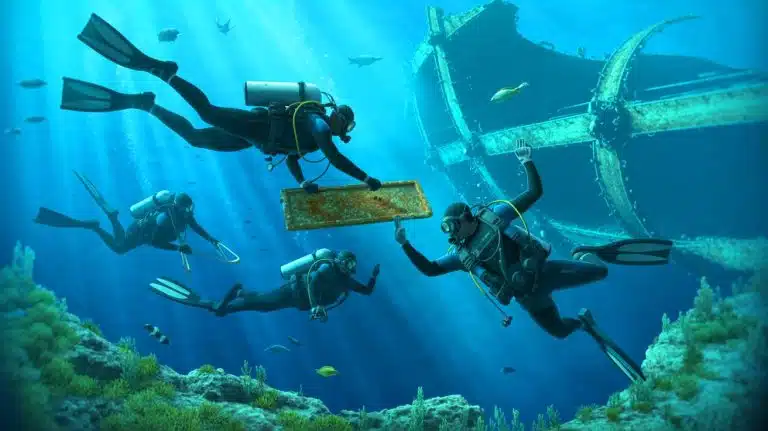| IN A NUTSHELL |
|
For the first time in over a century, artifacts from the Britannic, the sister ship of the infamous Titanic, have been raised from the depths of the Aegean Sea. This extraordinary recovery operation, executed by a team of professional divers, marks a significant milestone in maritime history. The Britannic, which sank in 1916 after striking a German mine during World War I, has long been a subject of interest for historians and enthusiasts alike. The Greek Ministry of Culture has confirmed the successful retrieval of these artifacts, emphasizing their historical importance and the role they will play in preserving the legacy of this once-grand vessel.
A Hospital Ship Lost in War
The Britannic was launched in 1914 by the White Star Line, intended to serve as a luxury ocean liner on the North Atlantic route. However, the outbreak of World War I altered its destiny. The British Admiralty requisitioned the ship, converting it into the HMHS Britannic, a floating hospital ship. The vessel was tasked with transporting wounded soldiers to the Allied hospital station on the island of Lemnos.
On November 21, 1916, tragedy struck when the Britannic hit a German mine while sailing near the island of Kea. The ship, one of the largest hospital vessels of the era, sank rapidly, taking with it the lives of 30 out of the 1,065 people on board. Some casualties occurred when lifeboats were caught in the ship’s still-spinning propellers. The Britannic’s resting place deep in the Aegean remained largely undisturbed, save for occasional visits by divers, until this recent recovery mission.
A Difficult Recovery Mission
The recovery operation was a challenging endeavor, orchestrated under the supervision of the Greek Ministry of Culture’s Ephorate of Underwater Antiquities. A team of 11 professional divers faced difficult conditions, including strong currents, low visibility, and the technical demands of diving nearly 400 feet below the surface. The use of closed-circuit rebreather systems was crucial to ensure the divers’ safety.
British historian Simon Mills, founder of the Britannic Foundation, organized the project. Dive safety and logistics were expertly managed by a team including I. Tzavelakos, Evan Kovacs, and Richie Kohler. The Ephorate of Underwater Antiquities provided oversight and initial conservation for the artifacts. These items were carefully lifted with airbags, secured in specially designed boxes, and initially stored by the Kea Police Department before being transferred to conservation laboratories in Athens.
Artifacts Reflecting Luxury and Utility
Among the recovered artifacts are several poignant reminders of the Britannic’s dual identity as both a luxury liner and a wartime hospital ship. Noteworthy items include the ship’s observatory bell and the port-side navigation light, both significant markers of the vessel’s history. Other objects such as silver-plated trays, ceramic tiles from the Turkish bath, a porcelain sink from the second-class cabins, and a pair of passenger binoculars offer a glimpse into the ship’s opulent design.
The Greek Ministry of Culture acknowledged that not all targeted objects could be retrieved, due to their condition or location. Nonetheless, the artifacts that were recovered establish a tangible link to the Britannic’s storied past, balancing its legacy of luxury with its critical wartime service.
A Permanent Place in History
The retrieved artifacts will soon find a permanent home in the forthcoming National Museum of Underwater Antiquities in Piraeus. A dedicated World War I section will feature the Britannic as a centerpiece, ensuring that the ship’s story and its tragic end are preserved for future generations. This museum aims to honor the legacy of the Britannic and its place in maritime history.
The success of this recovery mission was made possible through the collaborative efforts of the diving team and the local authorities in Kea, including the Municipality, Port Authority, and Police Department. Their support and dedication played a crucial role in the safe and successful execution of this historic mission.
As the world reflects on the newly unearthed treasures of the Britannic, questions arise about what other rediscoveries lie beneath our oceans. What other historical secrets are waiting to be uncovered, and how will they reshape our understanding of the past?
Did you like it? 4.4/5 (29)








Wow, this is incredible! How did they manage to find the artifacts after all these years? 🤯
Wow, that’s amazing! I had no idea the Britannic had such a history. 🚢